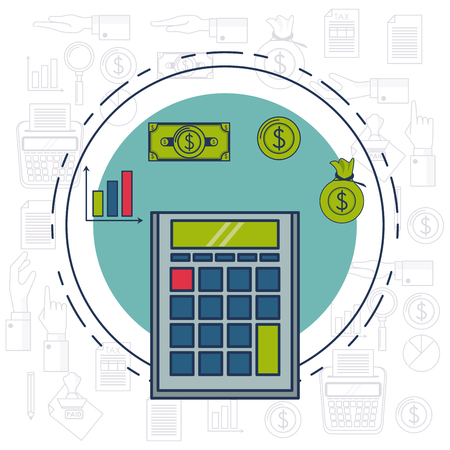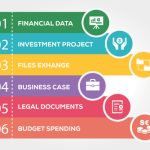1. Understanding the Basics of Budgeting
Budgeting is the foundation of financial success. It helps you manage your money effectively, ensuring that youre not spending more than you earn. By creating a budget, you can track your income and expenses, set financial goals, and work towards achieving financial stability.
What Is Budgeting?
At its core, budgeting is the process of creating a plan for how to spend your money. This plan helps you allocate funds for essentials like rent, groceries, and utilities while also setting aside money for savings and other financial goals. A well-structured budget can help you avoid debt, build wealth, and gain financial independence.
Why Is Budgeting Important?
Budgeting is essential because it allows you to:
- Gain control over your finances
- Reduce unnecessary spending
- Avoid debt and financial stress
- Save for emergencies and future goals
- Make informed financial decisions
How Can Budgeting Help You Achieve Financial Stability?
A solid budget ensures that you are living within your means while working toward financial security. Here’s how budgeting contributes to stability:
| Benefit | Description |
|---|---|
| Tracks Your Spending | Helps you see where your money goes and identify areas where you can cut back. |
| Prepares for Emergencies | Ensures you have funds set aside for unexpected expenses like medical bills or car repairs. |
| Reduces Debt | Allows you to allocate extra money toward paying off credit cards, loans, and other debts. |
| Encourages Savings | Makes it easier to set aside money for retirement, vacations, or big purchases. |
| Provides Peace of Mind | Keeps your finances organized so you don’t have to worry about running out of money before payday. |
Key Elements of a Successful Budget
A good budget includes several key components that help ensure financial success:
(1) Income
Your total earnings from all sources, including salary, side jobs, or passive income.
(2) Fixed Expenses
Regular monthly costs such as rent, mortgage payments, insurance premiums, and utility bills.
(3) Variable Expenses
Expenses that change from month to month, such as groceries, entertainment, and dining out.
(4) Savings & Investments
A portion of your income should go toward savings accounts, retirement funds, or investment opportunities.
(5) Debt Payments
If you have outstanding loans or credit card balances, include payments in your budget to reduce debt over time.
(6) Emergency Fund Contributions
An emergency fund helps cover unexpected costs without disrupting your financial stability.
Final Thoughts on Understanding Budgeting Basics
Mastering the basics of budgeting is the first step toward taking control of your finances. By understanding what budgeting is and why it matters, you’ll be better equipped to create a plan that aligns with your financial goals. The next step is learning how to build a budget that works for you—stay tuned!
2. Assessing Your Income and Expenses
Before you can create a solid budget, you need to understand how much money is coming in and where its going. Breaking down your income sources and tracking your expenses will give you a clear financial picture, helping you make informed decisions about your spending and saving habits.
Understanding Your Income
Your income includes all the money you receive regularly. This could be from your job, side hustles, investments, or any other sources of revenue. To get a complete picture, list all your income sources along with their average monthly amounts.
| Income Source | Monthly Amount |
|---|---|
| Main Job Salary | $XXXX |
| Side Hustle | $XXXX |
| Investments | $XXXX |
| Other Income | $XXXX |
| Total Income | $XXXX |
Categorizing Your Expenses
Your expenses are all the payments you make regularly. Categorizing them helps you see where your money is going and identify areas where you can cut back if needed.
(1) Fixed Expenses
These are recurring costs that remain relatively consistent each month. Examples include:
- Rent or mortgage payments
- Utilities (electricity, water, internet)
- Loan payments (student loans, car loans)
- Insurance premiums (health, car, home)
- Subscriptions (streaming services, gym memberships)
(2) Variable Expenses
These costs fluctuate from month to month based on your usage or lifestyle choices. Examples include:
- Groceries
- Dining out and entertainment
- Transportation (gas, rideshare services)
- Shopping (clothing, electronics)
- Travel and vacations
(3) Savings and Investments
Savings and investments should be treated as essential expenses to help build financial security over time. Consider allocating funds for:
- An emergency fund
- Retirement accounts (401(k), IRA)
- Stock market investments or real estate
- Sinking funds for future expenses (car repairs, home maintenance)
Tracking Your Spending Habits
The key to maintaining financial control is tracking every dollar you spend. You can use budgeting apps, spreadsheets, or even a simple notebook to log your daily transactions. By reviewing your spending regularly, youll identify patterns and find opportunities to cut unnecessary costs.
Your Financial Snapshot: Income vs. Expenses
The final step in assessing your finances is comparing your total income to your total expenses. Ideally, your income should exceed your expenses so you have room for savings and financial growth.
| Total Amount | |
|---|---|
| Total Income | $XXXX |
| Total Expenses | $XXXX |
| Savings/Deficit (+/-) | $XXXX |
If youre spending more than you earn, its time to adjust your budget by cutting unnecessary expenses or finding ways to increase your income. If you have extra money left over each month, consider boosting your savings or investing it for future financial growth.

3. Creating a Realistic Budget Plan
Creating a budget plan that works for you is key to managing your finances effectively. A well-structured budget helps you set financial goals, prioritize spending, and allocate funds efficiently. One of the most popular budgeting methods is the 50/30/20 rule, which provides a simple yet effective way to manage your income.
(1) Set Your Financial Goals
Before creating a budget, identify your short-term and long-term financial goals. Are you saving for an emergency fund, paying off debt, or planning for retirement? Defining clear goals will help guide your budgeting decisions.
(2) Understand the 50/30/20 Rule
The 50/30/20 rule is a straightforward budgeting method that divides your income into three categories:
| Category | Percentage of Income | Description |
|---|---|---|
| Needs | 50% | Essential expenses like rent, utilities, groceries, insurance, and minimum debt payments. |
| Wants | 30% | Lifestyle choices such as dining out, entertainment, travel, and shopping. |
| Savings & Debt Repayment | 20% | Savings for emergencies, investments, and extra payments toward debts. |
(3) Track Your Income and Expenses
The next step is to assess your income and track your spending habits. List all sources of income and categorize your expenses based on the 50/30/20 rule. This will help you identify areas where you might need adjustments.
(4) Prioritize Spending
If your expenses exceed your income or youre not saving enough, consider adjusting discretionary spending in the “Wants” category. Cutting back on non-essential items can free up money for savings or debt repayment.
(5) Allocate Funds Effectively
Create a system to ensure youre sticking to your budget. You can use budgeting apps, spreadsheets, or even cash envelope systems to stay on track. Automating savings transfers can also help you build financial security without extra effort.
4. Cutting Costs and Increasing Savings
Managing your budget effectively isn’t just about tracking income and expenses—it’s also about finding ways to cut unnecessary costs and boost your savings. By making small adjustments to your spending habits, you can free up more money for your financial goals. Here are some practical strategies to help you reduce expenses and increase your savings.
Smart Ways to Cut Expenses
(1) Review Your Subscriptions
Many people pay for subscriptions they rarely use. Take a close look at your streaming services, gym memberships, and other recurring charges. Cancel anything that doesn’t bring value to your life.
(2) Save on Groceries
Grocery bills can add up quickly. To save money:
- Create a shopping list and stick to it.
- Use coupons and cashback apps.
- Buy in bulk for frequently used items.
- Avoid impulse purchases at checkout.
(3) Reduce Utility Bills
You can lower energy and water bills with a few simple changes:
- Switch to energy-efficient appliances.
- Turn off lights when not in use.
- Set your thermostat wisely—lower in winter, higher in summer.
- Fix leaks to save on water costs.
(4) Cut Transportation Costs
If you drive regularly, consider these cost-saving tips:
- Carpool or use public transportation when possible.
- Shop around for better auto insurance rates.
- Keep tires properly inflated to improve fuel efficiency.
- Avoid unnecessary trips by planning errands efficiently.
Clever Strategies to Increase Savings
(1) Automate Your Savings
An easy way to build savings is by setting up automatic transfers from your checking account to a savings account. Even small amounts add up over time.
(2) Use the 50/30/20 Rule
This budgeting rule helps allocate income effectively:
| Category | % of Income |
|---|---|
| Needs (rent, food, utilities) | 50% |
| Wants (entertainment, dining out) | 30% |
| Savings & Debt Repayment | 20% |
(3) Take Advantage of Employer Benefits
If your employer offers a 401(k) match, contribute enough to get the full match—it’s essentially free money. Also, check if they provide discounts on services like phone plans or gym memberships.
(4) Avoid Lifestyle Inflation
A common mistake is increasing spending as income rises. Instead of upgrading your car or moving into a more expensive home immediately after a raise, direct that extra money into savings or investments.
(1) Set Clear Savings Goals
Having specific goals makes saving easier. Whether it’s an emergency fund, a vacation, or retirement, knowing what youre saving for keeps you motivated.
(2) Track Your Progress
Regularly reviewing your savings progress helps you stay on track. Use budgeting apps or spreadsheets to monitor growth and make adjustments as needed.
The key to financial stability is balancing smart spending with consistent saving. By cutting unnecessary expenses and prioritizing savings, you can take control of your finances and work toward long-term financial security.
5. Sticking to Your Budget and Adjusting as Needed
Creating a budget is just the first step—sticking to it and making necessary adjustments is where the real challenge lies. Life is unpredictable, and financial goals evolve, so its important to stay flexible while maintaining control over your finances.
Overcoming Common Budgeting Challenges
Even with the best intentions, its easy to face obstacles that can throw you off track. Here are some common challenges and how to overcome them:
| Challenge | Solution |
|---|---|
| Impulse Spending | Use the 24-hour rule—wait a day before making non-essential purchases. |
| Unexpected Expenses | Build an emergency fund to cover surprise costs without disrupting your budget. |
| Lack of Motivation | Set short-term rewards for sticking to your budget to stay motivated. |
| Budget Not Realistic | Regularly review and adjust your budget based on actual spending habits. |
How to Stay on Track
Maintaining your budget requires discipline and consistency. Follow these strategies to keep yourself accountable:
(1) Track Your Spending Regularly
Use budgeting apps or spreadsheets to monitor expenses in real time. Reviewing transactions weekly helps identify any overspending early.
(2) Set Reminders for Bill Payments
Avoid late fees by automating payments or setting calendar reminders for due dates.
(3) Use Cash for Discretionary Spending
If you struggle with overspending, withdraw a set amount of cash for categories like dining out or entertainment.
(4) Find an Accountability Partner
A friend or family member can help keep you on track by checking in on your progress and encouraging good financial habits.
Making Adjustments Based on Life Changes
Your budget should evolve with life circumstances. Whether youre facing a job change, a new financial goal, or unexpected expenses, here’s how to adjust accordingly:
(1) Increase Savings When Income Rises
If you get a raise or bonus, allocate a portion toward savings or debt repayment instead of increasing spending.
(2) Cut Back During Financial Hardships
If income decreases, prioritize essentials and reduce discretionary spending until finances stabilize.
(3) Reallocate Funds for New Goals
If you set a new financial goal (e.g., buying a home), adjust your budget by cutting unnecessary expenses and directing more funds toward savings.


